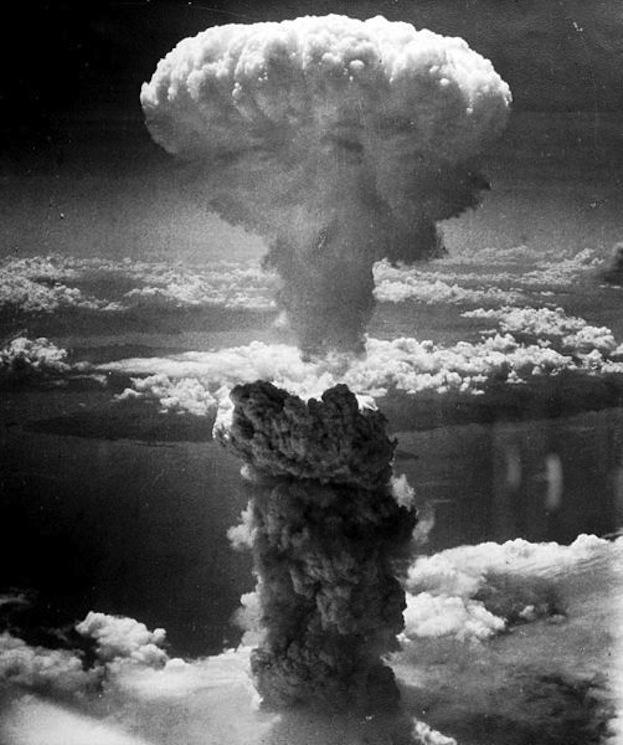
The world is still 3 minutes to doomsday.
The Bulletin of the Atomic Scientists chose not to move the hands of the "Doomsday Clock," which tracks how close humanity is to a global catastrophe. The clock was updated to 11:57 p.m. in January of last year.
"The clock remains at the closest to the brink since 1983, when U.S.-Russian tensions were also at their iciest," Lawrence Krauss, a chair of the Bulletin Board of Sponsors and the director of the Origins Project at Arizona State University, said on behalf of the Bulletin of the Atomic Scientists at a press briefing on Tuesday (Jan. 26).
Despite some bright spots, including the signing of a historic climate-change agreement in Paris and a nuclear agreement between the United States and Iran, other geopolitical factors weigh against moving the hands of the clock back, scientists said.
For instance, tensions between Pakistan and India remain at a flash point, and both countries have significant nuclear arsenals. The bulletin also cited the worsening relations between the U.S. and Russia, as well as their programs to modernize their nuclear weapons arsenals. Continued icy relations between the U.S. and North Korea also factored into the decision not to move the clock hands farther from disaster, the scientists said. [End of the World? Top Doomsday Fears]
Worrying trend
The Doomsday Clock doesn't make any prognostications about the actual coming of doomsday. Rather, the clock is a metaphor to illustrate how close humanity is to a global calamity, inspired both by the notion of midnight as the apocalypse and the "countdown to zero" language used before detonating a nuclear weapon. Failure to act on threats such as nuclear proliferation and global warming can spur scientists to push the clock hands forward, while scientists can turn back the clock on future catastrophe when conditions change for the better.
Sign up for the Live Science daily newsletter now
Get the world’s most fascinating discoveries delivered straight to your inbox.
Though the climate change agreement reached in Paris late last year are one of the few bright spots cited by the scientists, the agreement is voluntary, and it's too early to say whether nations involved will honor their commitments, Sivan Kartha, a member of the bulletin's Science and Security Board and a senior scientist and climate change expert at the Stockholm Environment Institute, said at the meeting.
"Even if all countries do meet their voluntary commitments, global emissions will continue to grow, rather than sharply decline, as will be needed to meet the 2 degree goal," Kartha said, referring to a goal of keeping Earth's warming below 2 degrees Celsius (3.6 degrees Fahrenheit) above preindustrial levels — a commitment many scientists believe is necessary to prevent the most serious effects of climate change.
Another worrying trend is the United States' and Russia's push to "modernize" their nuclear weapons arsenals. Both superpowers have plans to spend billions of dollars creating weapons more suited for modern warfare, including nuclear-tipped weapons capable of penetrating underground bunkers, scientists said at the news conference.
"The dangers are greater than during the Cold War," William Perry, a senior fellow at the Freeman Spogli Institute and former U.S. Secretary of Defense, said at the news conference.
Past changes
The Doomsday Clock has been updated 22 times in the past 68 years. In January 2015, the group of scientists ticked the minute hand forward to three-minutes to midnight. Prior to that, the Doomsday Clock sat at 11:55 p.m.
The Bulletin of the Atomic Scientists was formed in December 1945, after the U.S. dropped atomics bombs on Hiroshima and Nagasaki, Japan, leveling large swaths of the cities and killing at least 85,000 people instantly. The group was made up of former Manhattan Project physicists who hoped to warn the public about the dangers of nuclear weapons. The Doomsday Clock came into existence in 1947.
Since the clock was first conceived, humanity has been metaphorical minutes away from total world destruction. The clock debuted in 1947 at just seven minutes to midnight, and in 1953, the clock shifted forward to 11:58 p.m. after the two superpowers first tested the H-bomb. After the Soviet bloc collapsed and the U.S. and Russia signed the first nuclear disarmament treaty, the group's optimism spurred it to turn the Doomsday Clock all the way back to 11:47 p.m.
Follow Tia Ghose on Twitterand Google+. Follow Live Science @livescience, Facebook & Google+. Original article on Live Science.

Tia is the managing editor and was previously a senior writer for Live Science. Her work has appeared in Scientific American, Wired.com and other outlets. She holds a master's degree in bioengineering from the University of Washington, a graduate certificate in science writing from UC Santa Cruz and a bachelor's degree in mechanical engineering from the University of Texas at Austin. Tia was part of a team at the Milwaukee Journal Sentinel that published the Empty Cradles series on preterm births, which won multiple awards, including the 2012 Casey Medal for Meritorious Journalism.









